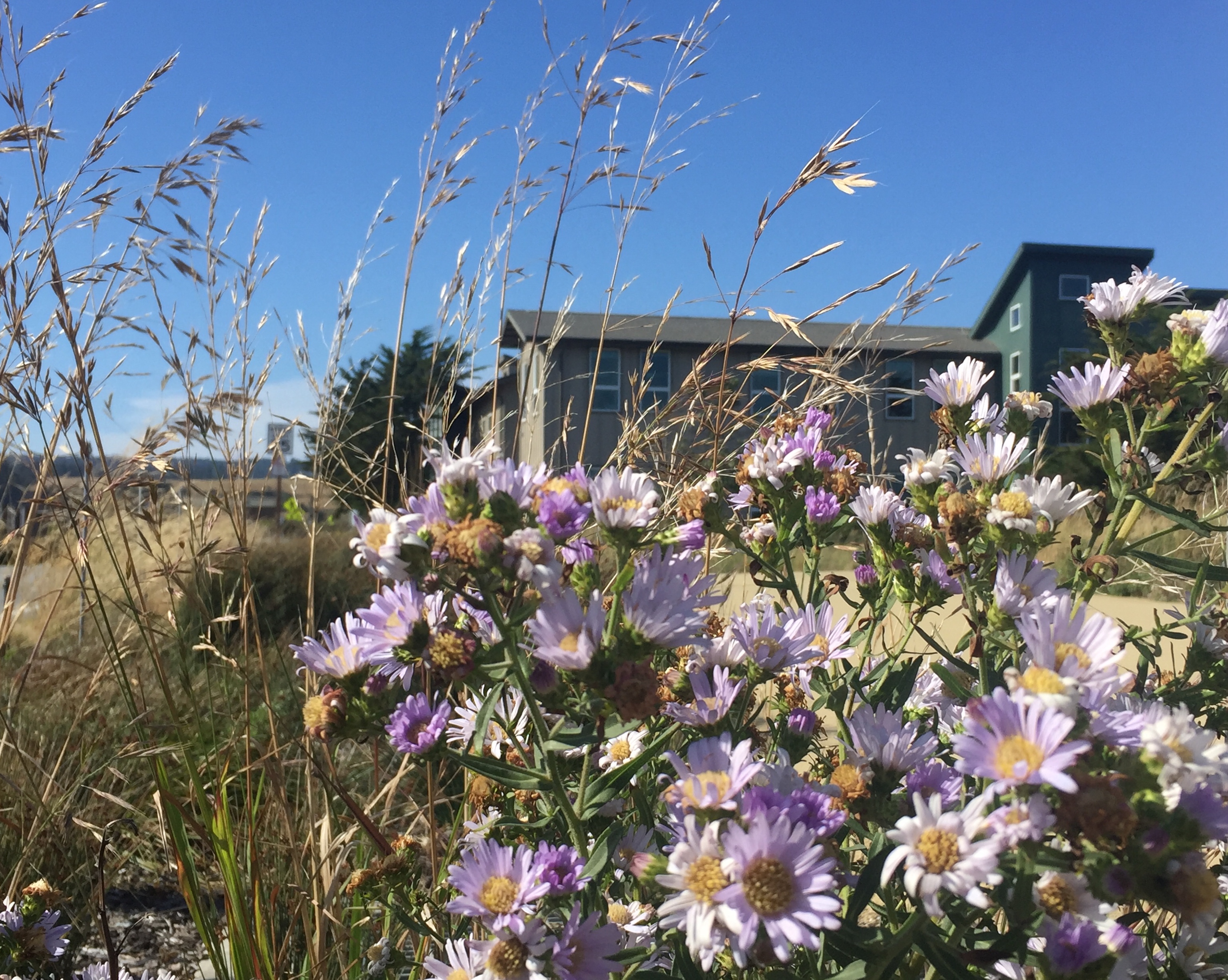Restoring Coastal Prairie Habitat at the UCSC Coastal Science Campus
Story and photos by Jessica Calvillo
Back in 2018 Central Coast Wilds Nursery and Ecological Concerns Inc. completed a large scale coastal prairie restoration project for UCSC’s 97 acre Coastal Science Campus. Our team saw the whole process through from collecting site specific seed, sowing and growing, planting, and installing irrigation for 102,330 native plants. Now, after a gloriously wet winter, summer is finally here and the fruits (or flowers rather) of our labor are putting on quite the show. Taking a walk along the surrounding paths lined with purple, yellow, and white flowers tucked between waves of golden blonde bunchgrasses, we can’t help but feel a heartwarming sense of pride seeing coastal prairie plants flourishing in their rightful home. More important than the sheer beauty of the plants themselves are their relationships with wildlife and how vital these dwindling habitats are.

California’s coastal prairie habitats are some of the most biologically diverse ecosystems in the state. They are found sporadically along the entire pacific coast 60 miles inland and up to 3000 ft in elevation. Climatic conditions are moderate and characterized by prolonged fog and high winds. This grassland type is home to a wide variety native plants that wildlife depend on for food, shelter from predators, nesting material, and as host plants. We have planted native flowering perennials and bunch grasses (listed below) that provide nectar and pollen for pollinators like the Yellow-Faced Bumblebee, the Buckeye Butterfly, the Northern Checker-Spot Butterfly, and so many more. While voles, gophers, sparrows, and red-winged blackbirds feast on the seeds, foliage, roots, and surrounding insects, white-tailed kites, American kestrels, and hawks circle above hungry for a meal as well. But alas, due to human development and competition with non-native invasive plant species, only 2% of California’s native grasslands remain, which means an even lower percentage for this particular grassland type, making restoration efforts like ours an urgent need (source CNPS).

Let’s face it, economically California’s coastline has a lot to love, from the booming tourism industry, to luxury beach front real estate, to fertile agricultural lands. But these human activities (including the introduction of invasive species) have all come at a steep cost, a cost which has crippled these once thriving and biodiverse ecosystems to meer pockets of their former glory. It’s as if we’ve “loved” these ecosystems almost out of existence. It surely is a sobering irony from which society as a whole must learn and make collective efforts to repair. But there is hope and the hard work and passion that has been put into this project, many years in the making, by our crew at Central Coast Wilds and Ecological Concerns Inc. cannot be overstated. A project this successful could not have happened without a team of ecologists, botanists, horticulturalists, managers, and field crew as experienced and dedicated as ours.

On your next walk be sure to visit the UCSC Coastal Biology Campus to admire all the wonder and beauty that our coastal prairies and bluffs have to offer. For even more information about coastal prairies and restoration volunteer events, follow these links to the California Native Plant Society, Santa Cruz chapter.
Coastal Prairies: www.cruzcnps.org/CoastalTerracePrairie.htmlVolunteer events: www.cruzcnps.org/habitat_restoration.php
Coastal Prairie Perennial Wildflowers:
- Yarrow (Achillea millifolium)
- Pacific Aster (Symphyotrichum chilense)
- Blue Eyed Grass (Sisyrinchium bellum)
- Gum Plant (Grindelia stricta)
- Buttercups (Ranunculus californica)
- Bee Plant (Scrophularia californica)
- Willowherb (Epilobium ciliatum)

- California brome (Bromus carinatus)
- California oatgrass (Danthonia californica)
- Tufted Hair Grass (Deschampsia cespitosa)
- Blue Wild Rye (Elymus glaucus)
- Creeping Wild Rye (Elymus triticoides)
- Meadow Barley (Hordeum brachyantherum)
- Purple Needle Grass (Stipa pulchra)





























